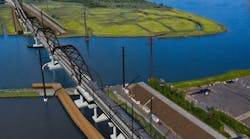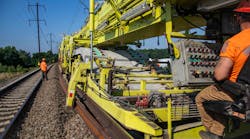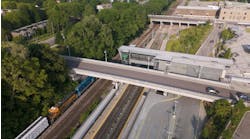Amtrak, MTA, NJ Transit releases ‘Doubling Trans-Hudson Train Capacity at New York Penn Station’ engineering feasibility study
Amtrak, the Metropolitan Transportation Authority (MTA) and New Jersey Transit (NJ Transit) released an engineering feasibility study that analyzes the potential of four concepts to double train capacity at New York Penn Station during the peak period, as well as expand Amtrak Empire Service without expanding the current station’s footprint. The study, “Doubling Trans-Hudson Train Capacity at New York Penn Station," concludes none of the concepts achieve the capacity goal, a significant milestone that determines the focus going forward will be on options that expand the station’s physical footprint.
“This study demonstrates that to meet the needs of the region, we must expand the station beyond its existing footprint to deliver the passenger capacity promised by the Gateway Program,” said Amtrak CEO Stephen Gardner. “The feasibility study is part of a long-term collaboration between Amtrak, MTA and NJ Transit to seek ways to transform the busiest train station in the Western Hemisphere into a modern, world-class facility with the capacity to provide 200,000 more passenger trips.”
“This is an important step for the future of Penn Station,” said MTA Construction & Development President Jamie Torres-Springer. “This detailed analysis lays the groundwork to how the region can work together to meet long-term capacity needs while also clearing the way for immediate improvements for the 600,000 daily customers in existing Penn Station.”
The station and its operational infrastructure, including the North and East River Tunnels, currently function at maximum capacity. The Gateway Program is a series of infrastructure improvements built around increasing train capacity within the 10 miles between Newark Penn Station and New York Penn Station. The study reveals significant additional train capacity at New York Penn Station is needed to accommodate existing and anticipated passenger demand, improve reliability and support future cross-regional rail service.
“The findings of this study highlight the critical need for a comprehensive approach to increase capacity at New York Penn Station,” said NJ Transit President and CEO Kevin S. Corbett. “NJ Transit is committed to the goal of delivering a Penn Station that transforms the customer experience and maximizes the benefits of the Gateway Program.”
According to the study, one of Gateway Program’s key objectives is to double passenger train service between New York and New Jersey from 24 to 48 trains per hour or more during peak hours. The approach is also consistent with the long-term vision for expanded intercity and regional passenger rail service on the Northeast Corridor (NEC) established by the Federal Railroad Administration’s NEC FUTURE Program.
The study focuses on two alternatives with two design concepts each to evaluate their potential to at least double the station’s existing rail capacity between New York and New Jersey in the peak direction during rush hours. The Under Penn Station concepts evaluated in the study involve adding 10 station tracks directly below the existing facility. The Through-Running alternatives include a full reconstruction option that requires complete demolition of existing tracks and platforms and reconstruction of fewer tracks with wider platforms and a Limited Track and Platform Reconfiguration option, which also envisions wider platforms and fewer tracks, but would require only partial demolition and reconstruction of existing tracks and platforms.
The study concludes that all concepts evaluated suffer from constructability, operational, safety, and/or connectivity challenges and flaws that render them infeasible for further evaluation. During the design and the environmental evaluation phases, the Railroad Partners will continue to develop options for expanding the station’s capacity that have the potential to meet the Gateway goal of doubling cross-Hudson train capacity.
Amtrak, MTA and NJ Transit say they are committed to a robust public engagement process in support of the two Penn Station projects (reconstruction, which will improve the existing facility, and capacity expansion, which will increase rail capacity), including convening a Station Working Advisory Group (SWAG) of more than 50 regional stakeholders who will meet regularly to discuss and provide input on the Railroad Partners’ vision for the station complex. The SWAG is co-chaired by Regional Plan Association President and CEO Tom Wright and New York University Rudin Center for Transportation Director and Assistant Clinical Professor of Public Service Sarah Kaufman.
The Railroad Partners commissioned the WSP USA/FXC JV team to develop the feasibility study. More information, including access to the study, details about the reconstruction and capacity expansion projects and the complete list of SWAG participants, is available here.







